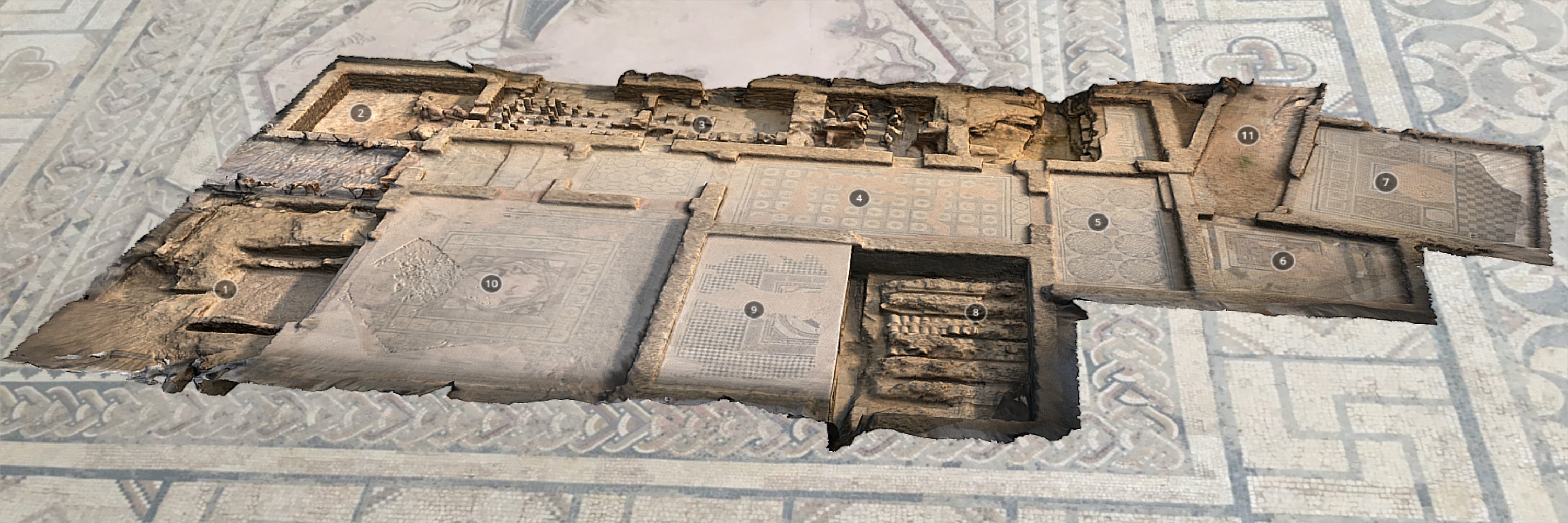Introduction
My name is Luis Coya Alaez and I am a Palaeolithic researcher, working on a Ph.D. in History and Archaeology at Complutense University, Madrid, Spain. I was born in Montevideo, Uruguay, where my parents were working, but I have lived most of my life in Oviedo, Asturias, Spain. Having graduated with a bachelor’s degree in Geography and History from the National Distance Education University (UNED), I have a master’s degree in New Methods and Techniques for Investigation in Geography, History, and Art by the same University. Also, I spend time as an illustrator and designer.
After 30 years working in a bank, in recent years as a branch manager, I guided my life to the activities that I am passionate about, so you can see me now working as an archaeologist and illustrator.
In the last year of my postgraduate studies, I took some courses on 3D software and soon I saw the big potential of these tools in researching, learning, sharing culture, and heritage conservation.
From that moment I tried to practice photogrammetry everywhere I went when I found something interesting.
My latest works depict Palaeolithic Art and Medieval Spanish art, but I also keep adding to an epigraphic collection of vadinienses stelas, from the Roman times.
Museo Virtual de las lápidas vadinienses en 3D by luiscoya on Sketchfab
Institutions with funding have the possibility of purchasing expensive tools to capture, archive and register their collections in 3D, sometimes out of the public view. But most people capturing and interacting with cultural and historic heritage cannot use those expensive tools. Now we can make high-quality models using photogrammetry applications, in a cheap way with easy-to-use software. There are a lot of old buildings, archaeological sites, caves, and ethnic tools worldwide that we must capture before a casual disaster, war or accident damage them. So, one of my projects is the promotion of basic 3D techniques to unemployed people, retired people, and volunteers (with guidance on how to achieve the best quality results). My goal is to make an army for virtual heritage conservation using 3D photogrammetry. Time is short and the job is big.
As I live in a country with a long history, I have made models of objects that date from prehistoric times until the Middle Ages. You can see them on Sketchfab organized into collections.
My Ph.D. is about the final period of the Upper Palaeolithic in a river basin near my home. I must research, for example, why our ancestors left wonderful figurative cave paintings and changed their ways of communicating. The 3D models give me a lot of information to analyze prehistoric art to understand why figurative art disappeared with the Holocene Era.
The other models that I have made are my contribution to sharing our rich cultural and historic heritage worldwide.
Workshop
My equipment is simple. I use a range of cameras, usually a NIKON D5200 and a SONY DSC-HX350. Working inside, if I can, first I do a test session to identify problems with lighting. Then, I use tripods, a shutter delay, and light sets to avoid blurry images and alignment errors.
If I work at home, I use an LED light set.
Arte Medieval by luiscoya on Sketchfab
Photogrammetry
Most times, the shooting conditions in museums or building ruins present challenges and you must work with the best lighting and positioning that you can manage. Other times, the weather can suddenly change the light. Every photogrammetry session is an adventure for me.
About software, I use Agisoft Metashape and RealityCapture for photogrammetry, choosing the best results of each one. I use Blender if I need to add non-photogrammetric meshes to the final model.
I use applications like Meshlab to retopologize models.
3D and Cultural Heritage: The Future Of Recording and Archives
Soon, institutions must create databases of 3D archives, as they do now with 2D images, to enable us to understand archaeological sites and objects better. It is also important that colleges, universities, and schools offer learning courses about 3D techniques. These advances will help so much in cultural heritage conservation. Academia moves more slowly than software updates, sadly.
Sketchfab
This platform was, is, and will be essential for 3D users because of its simple uploading, ability to view models, and opportunities for learning, primarily. The Sketchfab team is always helping you, following your works, and supporting them.
Sketchfab makes me addicted to photogrammetry because it makes it easy for people to see my models as soon as I have finished them. Also, it lets me easily re-upload new models when I make better pieces, updating the quality of the items.
Many friends, colleagues, and teachers are on Sketchfab, but I especially encourage you to take a look at the works from Zoilo, a great 3D artist and art historicist from Carrion de los Condes, Palencia, Spain, who makes wonderful 3D models of Romanesque art.
Luis Coya Aláez






